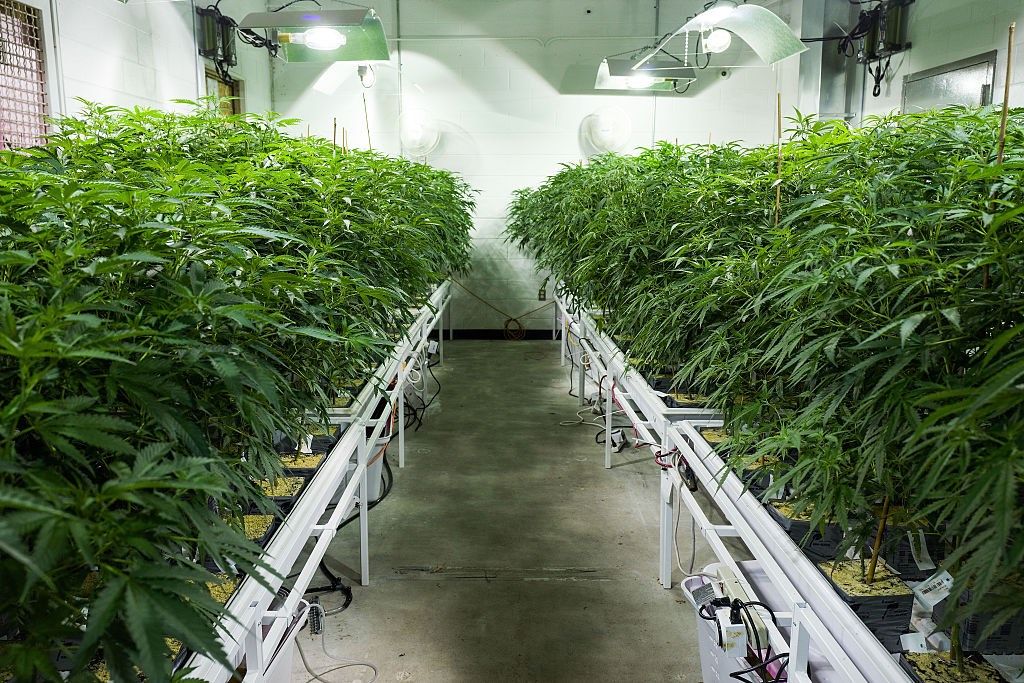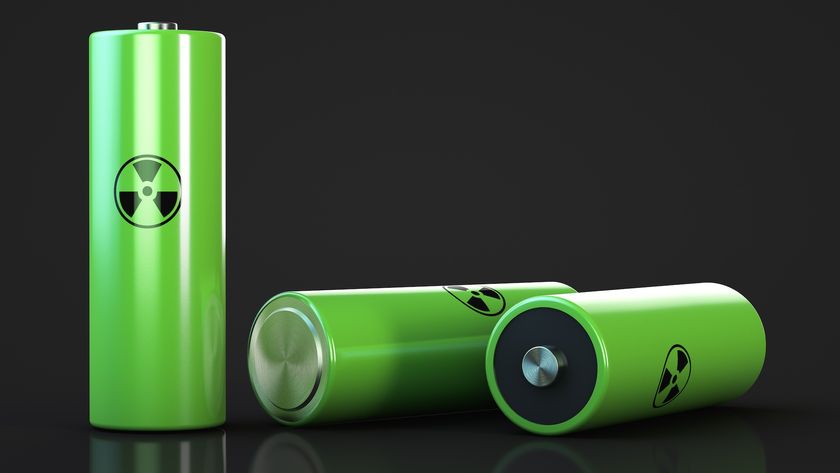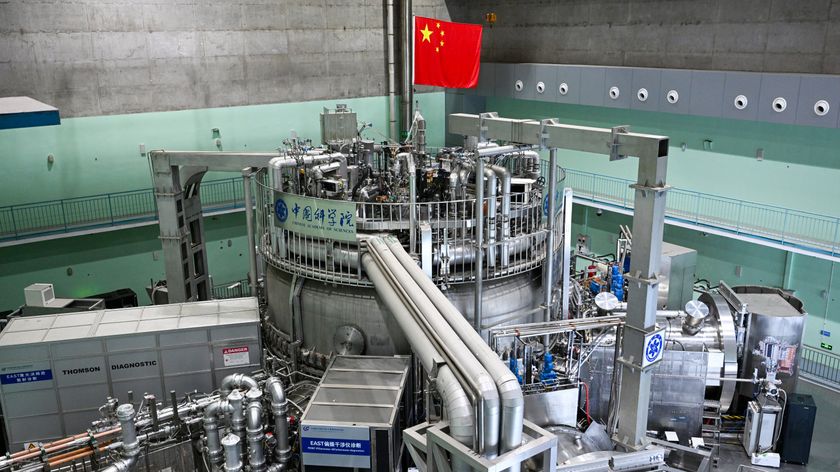
After a flood of pro-pot ballot measures in November, recreational marijuana use will soon be legal in eight U.S. states plus the District of Columbia, and medical marijuana will be legal in 29 states. Barring a federal clampdown from the incoming Trump administration, analysts expect legal cannabis to be a boom industry, particularly in California, the world's sixth largest economy.
But as billions in investment dollars flow westward to build large new cannabis production facilities, conservation groups and eco-conscious growers are troubled by the growing carbon footprint of pot production.
"Marijuana is the most energy-intensive manufacturing process in America," said Timothy Hade, co-founder of Scale Energy Solutions, a startup that consults cannabis producers on energy efficiency. "Producing a pound of marijuana uses 300 times the amount of energy than producing a pound of aluminum."
RELATED: 2,500-Year-Old Skeleton Found Wrapped in Marijuana
That's because more than 90 percent of legal weed in the United States is grown indoors using lights. Conventional grow lights not only suck up tons of electricity, but they produce intense residual heat. To keep grow room temperatures in the high 80s, indoor operations have to pump in air conditioning, another huge electric load. Then there are the fans to circulate air and the water pumps to feed the hydroponic channels. By various estimates, the energy demands of an indoor growing operation make up between 20 and 40 percent of the total cost of production.
As electric utilities in Western states work to meet ambitious emissions standards, legal pot is becoming the newest environmental nuisance. In Colorado, the Denver-based utility Xcel Energy reported that electricity use rose 1.2 percent in 2015 and nearly half of the increase was from indoor pot farms.
A 2011 report estimated that indoor cannabis production consumed 1 percent of total U.S. electricity and equaled the greenhouse gas emissions of three million cars per year.
Sign up for the Live Science daily newsletter now
Get the world’s most fascinating discoveries delivered straight to your inbox.
"One percent may sound like a small number, but in context of our electrical grid, it's massive," said Hade, whose own calculations puts the number a little lower, between 0.4 and 0.8 percent of total electricity use. "We spend six times more electricity growing cannabis than the entire pharmaceutical industry."
Conservationists fear that if energy-efficient growing standards aren't put into place now, marijuana has the potential to become one of the "dirtiest" industries in America in terms of energy burned per pound of product.
Derek Smith is the founder and executive director of the Resource Innovation Institute (RII), an Oregon-based nonprofit working to create green standards for the cannabis industry before it's too late.
"There's definitely a gold-rush mentality," said Smith, whose technical advisory team is busy creating a "competitive facility checklist" as an energy-efficiency blueprint for new growers. "Frankly, we don't have time to wait for standards to be perfected if we want to influence the way these facilities are designed and constructed and maintained."
With the right standards in place, though, Smith and his consortium of "green" pot advocates believe that the cannabis industry can not only shed its nagging reputation as an "energy hog," but become a shining model of sustainability.
Jeremy Plumb, a Portland-based grower, dispensary owner and adviser to the RII, is building a 40,000 square-foot greenhouse facility called Newcleus Nurseries as a laboratory and showcase for green growing technology. The glass-walled growhouse will use the most efficient (and expensive) LED lighting to supplement Portland's skimpy sunshine, and tap its own 12-acre field of solar panels for electricity.
"Cannabis can be the new 'green revolution,'" said Plumb. "The same technology we're using could be used to grow food in vertical farms."
RELATED: Doobies for Dogs: Why Pet Owners Are Buying Weed
LED lighting represents the biggest efficiency upgrade for any indoor growing operation. The upfront costs can be substantial — a high-efficiency LED light costs more than $1,300 compared to around $400 for a conventional high-pressure sodium bulb — but the long-term savings add up. For starters, a conventional bulb needs to be replaced twice a year, while an LED can last for several years. But the biggest savings come through lower energy use and lower cooling costs.
Fluence Bioengineering is a producer of high-end LED grow lights for cannabis and indoor agriculture at large. According to field studies from cannabis clients, a Fluence LED uses 40 percent of the energy as a conventional bulb. And because LEDs produce far less heat, the load on the HVAC system was reduced by 35 percent per square foot of growing space.
The trick is convincing anxious new cannabis investors to think past short-term profits toward long-term sustainability. Benjamin Franz is director of research and development for MJardin, a cannabis cultivation management company with more than 500,000 square feet of legal weed in production.
"A lot of newer clients are increasingly interested in the energy-efficient technologies, but the minute the see the price tag of some of the lighting solutions, they often reconsider the importance," said Franz.
If the recent price volatility in Colorado is any indication, cannabis growers might be forced to turn to energy efficient technologies simply to cut costs.
"At the beginning of year in Colorado, the price of wholesale flower was $2,000 a pound. Today's it's between $1,000 and $1,200 a pound," said Hade of Scale Energy Solutions. "If you run an energy-efficient facility that can produce the product for five to 10 percent cheaper, those growers are going to win."
Hade himself is a newcomer to the cannabis industry. He and his partners used to work as clean energy consultants in the healthcare sector, until he realized that cannabis cultivation was the perfect match for a sustainable microgrid, Hade's specialty.
"Because of the way the crop is grown, most of the energy in a cultivation facility is being used 24/7/365," said Hade, which results in a stable and predictable electricity load, unusual in any building or factory. "They also have a really big thermal load, and one of best opportunities for energy efficiency in the country today is using waste heat to offset thermal load."
RELATED: Vertical Farms to Sprout Up in Cities
Hade's ideal high-efficiency growing facility would be powered by a sustainable microgrid composed of three elements: solar PV panels for supplemental energy, lithium-ion batteries for storage and a natural gas-powered electric generator. The waste heat produced by the generator would be recaptured and used to power the cooling system. Such a system would cost between $2 and $3 million to set up.
Like the folks at the Resource Innovation Institute, Hade sees sustainable cannabis as a test case and a proving ground for technologies that could reduce energy consumption across all industrial sectors.
"We're very, very confident that the cannabis industry has the potential to be a springboard for the 'clean tech' industry," said Hade, with an emphasis on "potential."
Hade's startup has only been in business for six months and has yet to land its first paying cannabis client.
Original article on Seeker.












